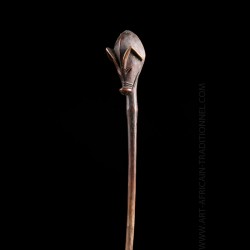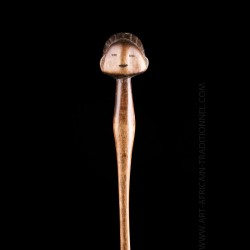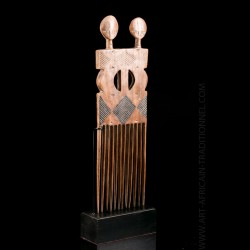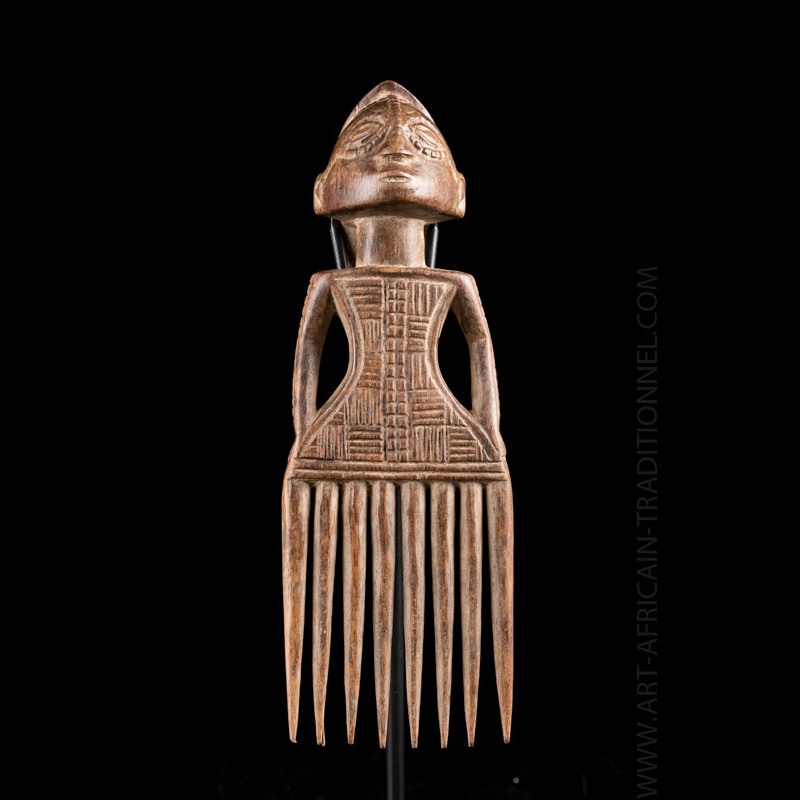


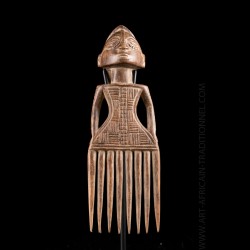













In the early 19th century, a number of tawba families became richer by entering into trade agreements with other families in the region. This sudden growth in wealth has seen these families establish prestige and control over their communities. To further validate their superiority and, in turn, their right to govern and rule, wealthy families have developed historical ties with their ancestors. They invented ancient lineages and commissioned religious scholars to create royal wooden mipasi ancestors (also known as mikisi) to legitimize their claim to power. Thus a new kind of sculpture was created among the Tabwa. Beautiful African comb.
Here, the figurine overcomes an object of everyday life found in other ethnic groups of course, the comb. African art.
The character has a long headdress pulled back and facial scarification. The comb itself is finely chiseled.
Data sheet
You might also like

In the early 19th century, a number of tawba families became richer by entering into trade agreements with other families in the region. This sudden growth in wealth has seen these families establish prestige and control over their communities. To further validate their superiority and, in turn, their right to govern and rule, wealthy families have developed historical ties with their ancestors. They invented ancient lineages and commissioned religious scholars to create royal wooden mipasi ancestors (also known as mikisi) to legitimize their claim to power. Thus a new kind of sculpture was created among the Tabwa. Beautiful African comb.
Here, the figurine overcomes an object of everyday life found in other ethnic groups of course, the comb. African art.
The character has a long headdress pulled back and facial scarification. The comb itself is finely chiseled.
